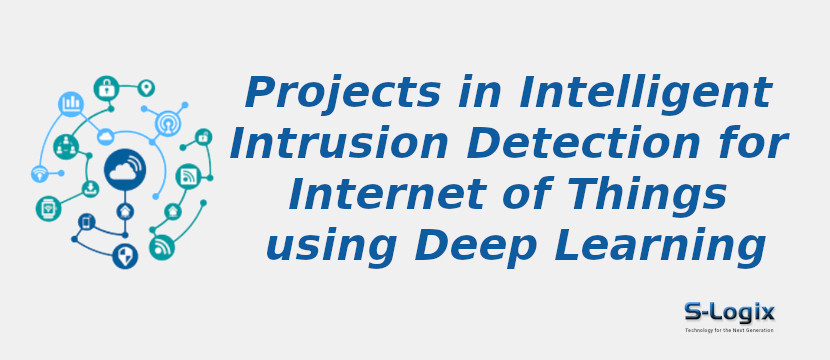Project Background:
The Intelligent Intrusion Detection for Internet of Things (IoT) using deep learning is situated at the intersection of cybersecurity and artificial intelligence, addressing the growing need for robust security solutions in IoT environments. With the proliferation of connected devices, IoT networks are vulnerable to various cyber threats and attacks, making intrusion detection a critical aspect of ensuring data privacy and network integrity. Traditional intrusion detection systems often struggle to keep pace with the dynamic and complex nature of IoT networks, leading to gaps in security coverage and detection capabilities. This project work aims to leverage the power of deep learning algorithms to enhance intrusion detection in IoT environments. By analyzing network traffic patterns, device behavior, and anomalies, deep learning models can identify and mitigate potential threats in real-time. The project also focuses on developing intelligent algorithms that adapt and learn from evolving attack vectors, improving the resilience of IoT security defenses.
Problem Statement
- Addressing the evolving and complex nature of cyber threats in IoT environments.
- Developing intrusion detection systems that can scale to handle large-scale IoT deployments.
- Achieving real-time detection and response capabilities to mitigate potential intrusions promptly.
- Ensuring deep learning models used for intrusion detection are interpretable and actionable for security analysts.
Aim and Objectives
- Develop an intelligent intrusion detection system for IoT using deep learning.
- Analyze and understand the unique cybersecurity challenges in IoT environments.
- Design deep learning models to detect anomalies and intrusions in IoT network traffic.
-
Enhance model scalability to handle large-scale IoT deployments with diverse devices.
- Achieve real-time detection and response capabilities for prompt mitigation of intrusions.
- Ensure model interpretability and actionable insights for security analysts.
- Collaborate with IoT industry stakeholders to validate and deploy the intrusion detection system.
Contributions to Intelligent Intrusion Detection for IoT
- Developed deep learning-based algorithms tailored for detecting intrusions in IoT networks.
- Enhanced model scalability to handle large-scale IoT deployments effectively.
- Improved real-time detection capabilities for prompt response to potential intrusions.
- Provided actionable insights and interpretability in deep learning models for security analysts.
Deep Learning Algorithms for Intelligent Intrusion Detection for IoT
- Convolutional Neural Networks (CNNs)
-
Long Short-Term Memory (LSTM) Networks
-
Recurrent Neural Networks (RNNs)
-
Gated Recurrent Unit (GRU) Networks
-
Autoencoders (AEs)
-
Variational Autoencoders (VAEs)
-
Generative Adversarial Networks (GANs)
-
Capsule Networks
-
Attention Mechanisms
-
Transformer Networks
Datasets for Intelligent Intrusion Detection for IoT
- IoT-23 Dataset
CICIDS 2017
-
UNSW-NB15
-
ISCX 2012
-
KDD Cup 1999 Dataset
-
NSL-KDD
-
DARPA Intrusion Detection Evaluation Dataset
-
Kyoto 2006+ Dataset
-
Bot-IoT Dataset
-
SWaT Dataset
Performance Metrics
- Accuracy
-
Precision
-
Recall
-
F1-score
-
Area Under the ROC Curve (AUC-ROC)
-
True Positive Rate (TPR) / Sensitivity
-
False Positive Rate (FPR)
-
Specificity
-
False Negative Rate (FNR)
-
Confusion Matrix
Software Tools and Technologies
Operating System: Ubuntu 18.04 LTS 64bit / Windows 10
Development Tools: Anaconda3, Spyder 5.0, Jupyter Notebook
Language Version: Python 3.9
Python Libraries:
1. Python ML Libraries:
- Scikit-Learn
- Numpy
- Pandas
- Matplotlib
- Seaborn
- Docker
- MLflow
2. Deep Learning Frameworks:
- Keras
- TensorFlow
- PyTorch
